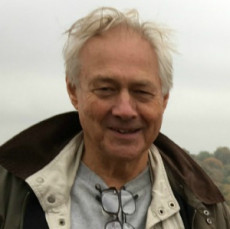Colombo, September 10: Over the next three weeks I will be visiting our partner in Sri Lanka, the Home for Human Rights, which has been supporting Tamil communities in the East that were hammered by the Tsunami late last year.
First, some background.
Sri Lanka is inhabited by two peoples, Sinhalese and Tamils, who both claim to be indigenous to the island. The Tamils, who comprise about 4 million of the 18 million inhabitants, live mainly in the north and east.
The island’s imperial rulers (Portuguese, Dutch, and British respectively) helped to polarize the relationship between Tamils and Sinhalese. Britain imported large numbers of laborers from Southern India to work on tea estates, and further disturbed the ethnic balance by offering advancement to those willing to learn English. The Tamils were more open to the foreign presence and flourished. By the time of independence in 1947, over 60% of the white collar jobs were held by Tamils.
With independence, politicians from the Sinhalese majority started to roll back what they saw as Tamil privileges with a series of deeply divisive laws. One made Sinhalese the national language. Another law deprived the estate Tamils of citizenship. Yet another moved large numbers of Sinhalese to the east of the country, upsetting the demographics.
Under the guise of “standardized education,” a fourth controversial law required that students from the Tamil minority secure higher marks to enter university. This provoked nation-wide riots in 1977 and sent hundreds of disgruntled young Tamils into the ranks of extremist Tamil groups.
The late 1970s also saw the emergence of the Liberation Tamil Tigers of Eeelam (LTTE) under the leadership of Veluppillai Prabakaran. Prabakaran, who has been sentenced to 200 years in prison and has been reported killed many times, is feared by Sinhalese and adored by most Tamils, who choose to ignore his ferocity.
The crisis erupted in fearful bloodletting in 1983, which claimed thousands of Tamil lives and sent waves of refugees to Europe. In 1987 India sent in a peace-keeping force which withdrew in 1990 after being severely bloodied by the LTTE and left the northeast to LTTE control. Jaffna was recaptured by the Sri Lankan Government forces in 1995, but the government presence is tenuous and the LTTE remains in effective control of large areas of the northeast.
In September 2002, Norway helped to negotiate a ceasefire which has more or less held, in spite of the recent assassination of the Foreign Minister (himself a Tamil).
Following the Tsunami, there was some hope that the common suffering of Tamils and Sinhalese would boost the peace process and encourage cooperation between the Government and LTTE. Aid donors did some arm-twisting, and insisted that the two sides develop joint structures to distribute aid in the Tamil areas. This would have represented a significant surrender of sovereignty to the LTTE and it was challenged by the JVP, an extreme right-wing party. The Supreme Court declared some provisions of the law unconstitutional.
While this suggests that inter-ethnic cooperation cannot be imposed from the outside, many ordinary Tamils and Sinhalese put aside their differences in the immediate aftermath of the tragedy. In Batticaloa, members of the anti-terrorist Special Task Force (some of whose compounds were flattened by the wave) worked with LTTE insurgents. In Washington, the Sri Lankan Society of Washington, which represents the diaspora in the US, raised $1,300 for HHR’s relief effort.
Posted By Iain Guest
Posted Sep 10th, 2005

